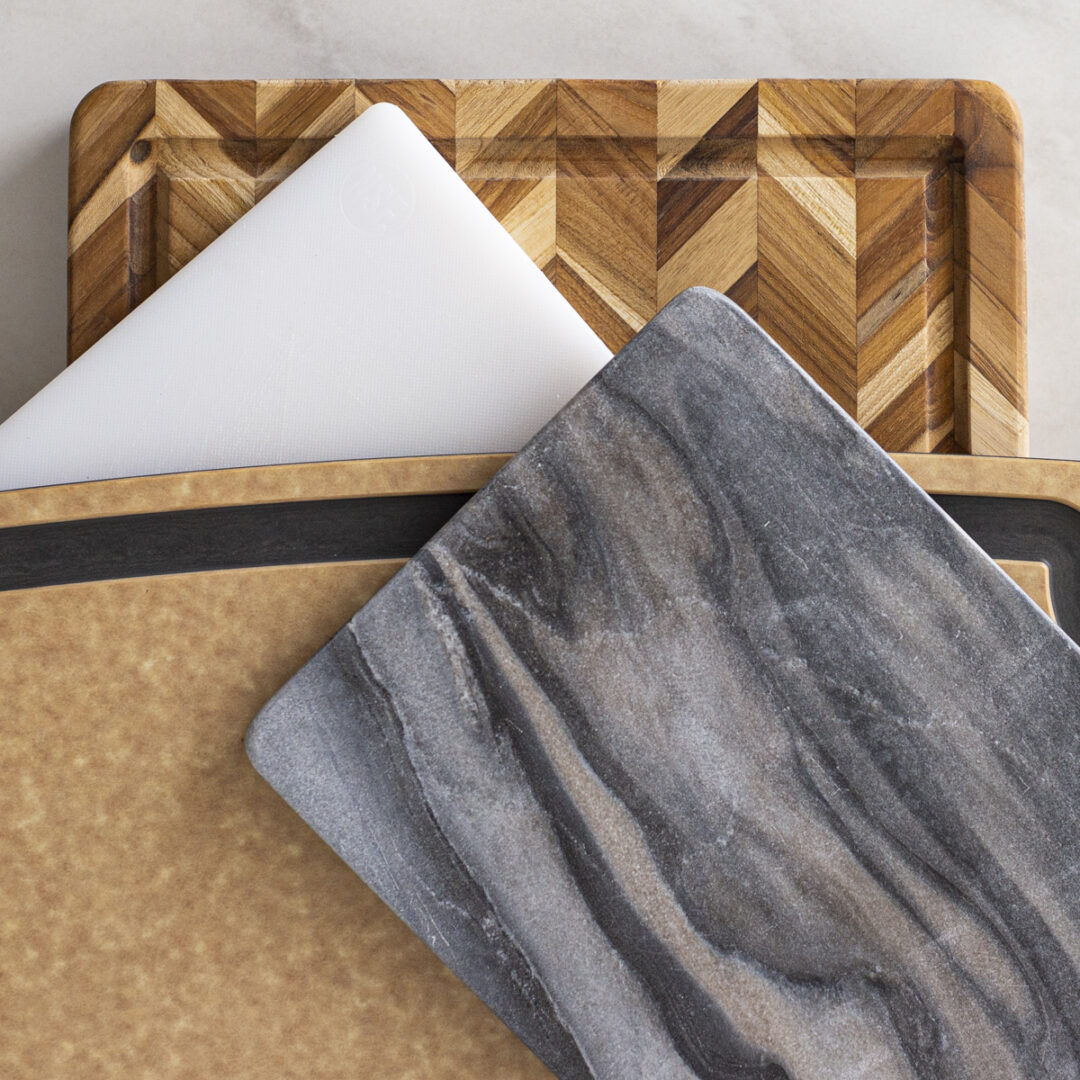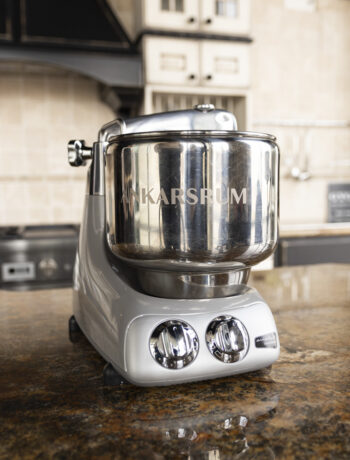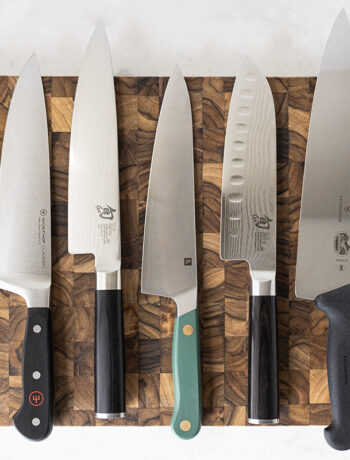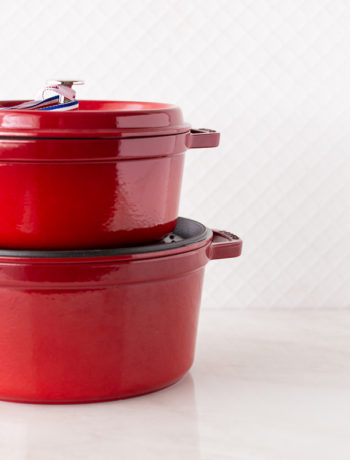As any chef or home cook can tell you, a high-quality chef’s knife is an essential kitchen tool. But did you know your cutting board is just as important? Finding the right one will directly affect the longevity of your knives. This surface plays a critical role in preserving the sharpness and overall health of the blade. Choosing the right cutting boards not only helps maintain your knife’s edge but can also make food preparation more efficient and enjoyable.
In this post, let us break down the different cutting board materials, their benefits, and help you choose the best option for your kitchen to ensure your chef’s knife stays sharp for years to come.
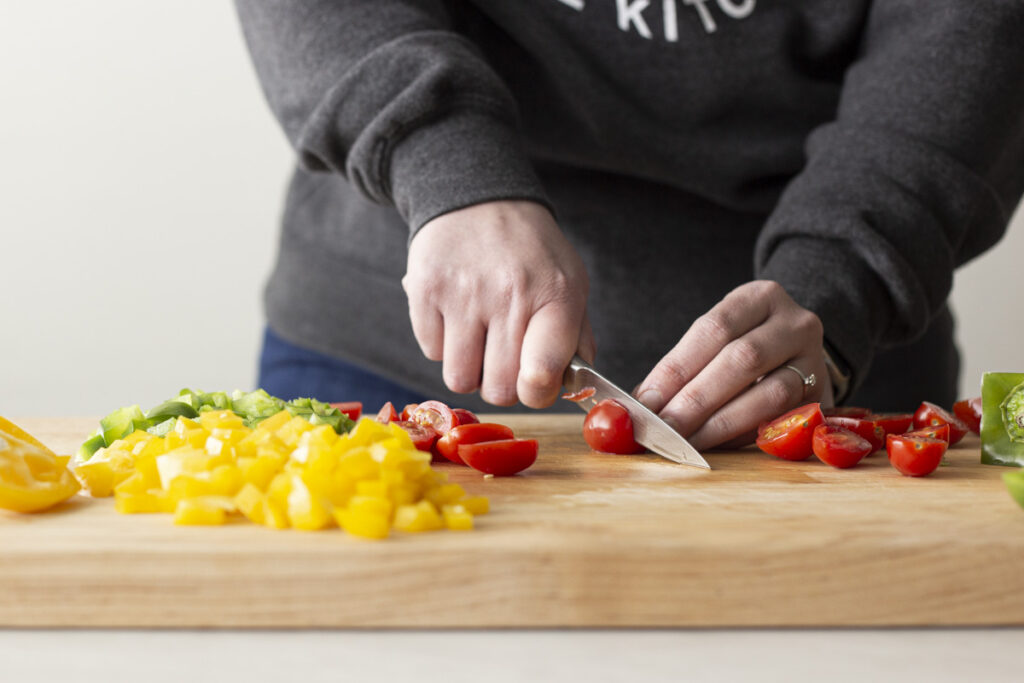
Why Cutting Boards Matter
The knives in your kitchen are precise, sharp tools designed to slice, chop, and dice effortlessly, However, if you are cutting on the wrong surface, the edge of the knives can dull quickly, leading to more damage and more frequent sharpening.
Ultimately, the cutting board has to offer the right balance of durability, gentleness, and ease of maintenance. Let’s take a look at the most common cutting board materials and evaluate their impact on your knife’s health.
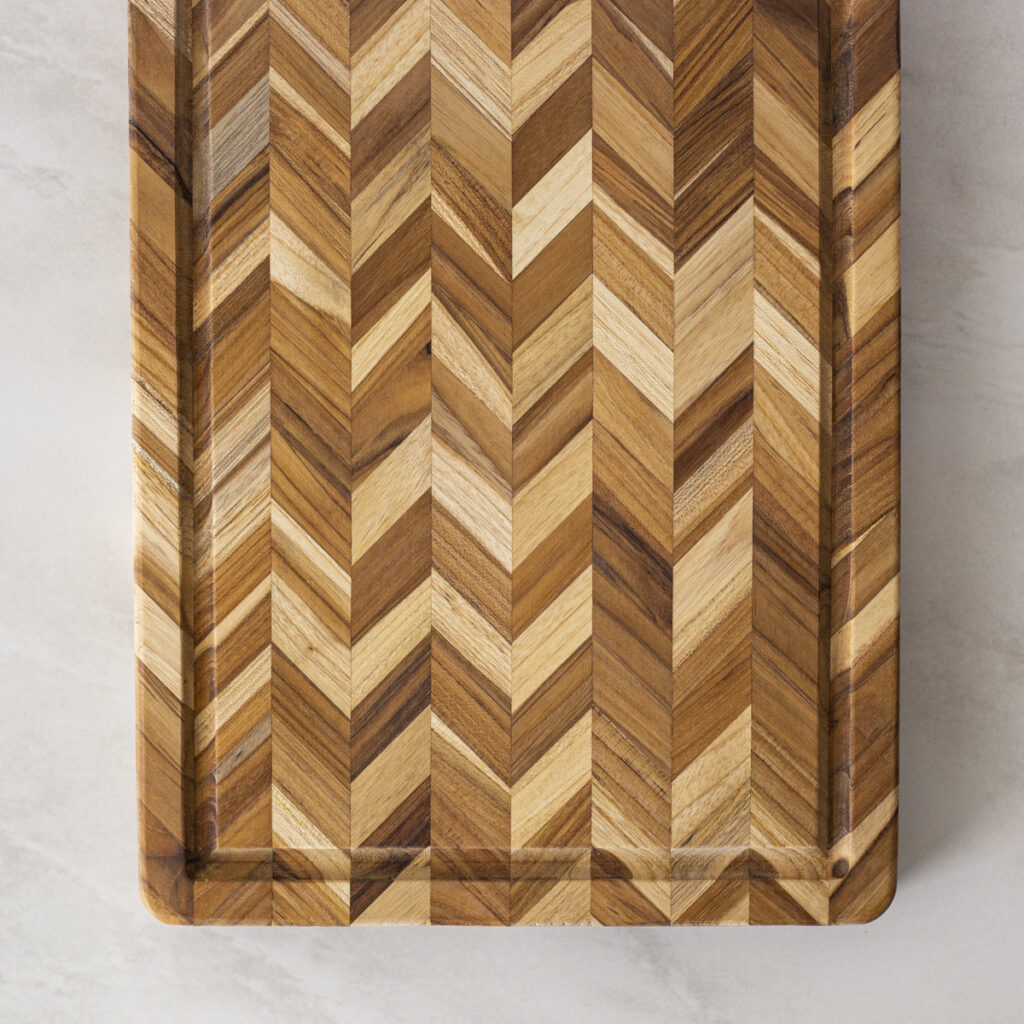
Wooden Cutting Boards
Considered the gold standard for both professional and home cooks, wooden cutting boards are the go-to option. They are easy on knives, offer a beautiful, natural aesthetic, and have a reputation for lasting a long time with proper care and maintenance.
Pros:
- Gentle on knife edges: The natural fibers of wood (especially on end-grain cutting boards) provide a forgiving service to preserve the sharpness of your knives.
- Durable and long-lasting: A well maintained wooden cutting board will last for years and years.
- Natural antibacterial properties: Some types of wood, like walnut and maple, have natural antibacterial properties. This is an added bonus for food safety.
- Gentle on blades: The fibers of wooden boards also “self-heal” to some extent, knitting back together after cuts. This helps reduce even more wear on your knives.
Cons:
- Requires regular maintenance: Wooden cutting boards need to be regularly cleaned, disinfected, and oiled to prevent drying out and cracking or splitting.
- Not dishwasher safe: You can’t just toss a wooden cutting board in the dishwasher. You need to clean it by hand with mild detergent and hot water and disinfect it with lemon juice and salt to really keep the surface bacteria free.
- Prone to staining: Wood can absorb liquids and may stain, especially from more acidic foods.
Bamboo Cutting Boards
Bamboo boards are often touted as an eco-friendly alternative to traditional wooden cutting boards. They are technically made from grass, not wood. And they are typically lighter and more affordable.
Pros:
- Harder than wood: Bamboo cutting boards are denser than a lot of wood cutting boards, making them more resistant to knife marks.
- Lightweight and affordable: Generally, bamboo is also lighter than wood, making it easy to move around and store.
- Eco-friendly: Bamboo is a fast-growing, and renewable resource, making it a great choice for environmentally conscious consumers.
Cons:
- Can be hard on knives: Bamboo’s density can cause knives to dull faster compared to softer woods.
- Requires extra maintenance: Like wood, bamboo is still a porous material that requires a little extra care and maintenance. It will need occasional oiling to prevent splitting.
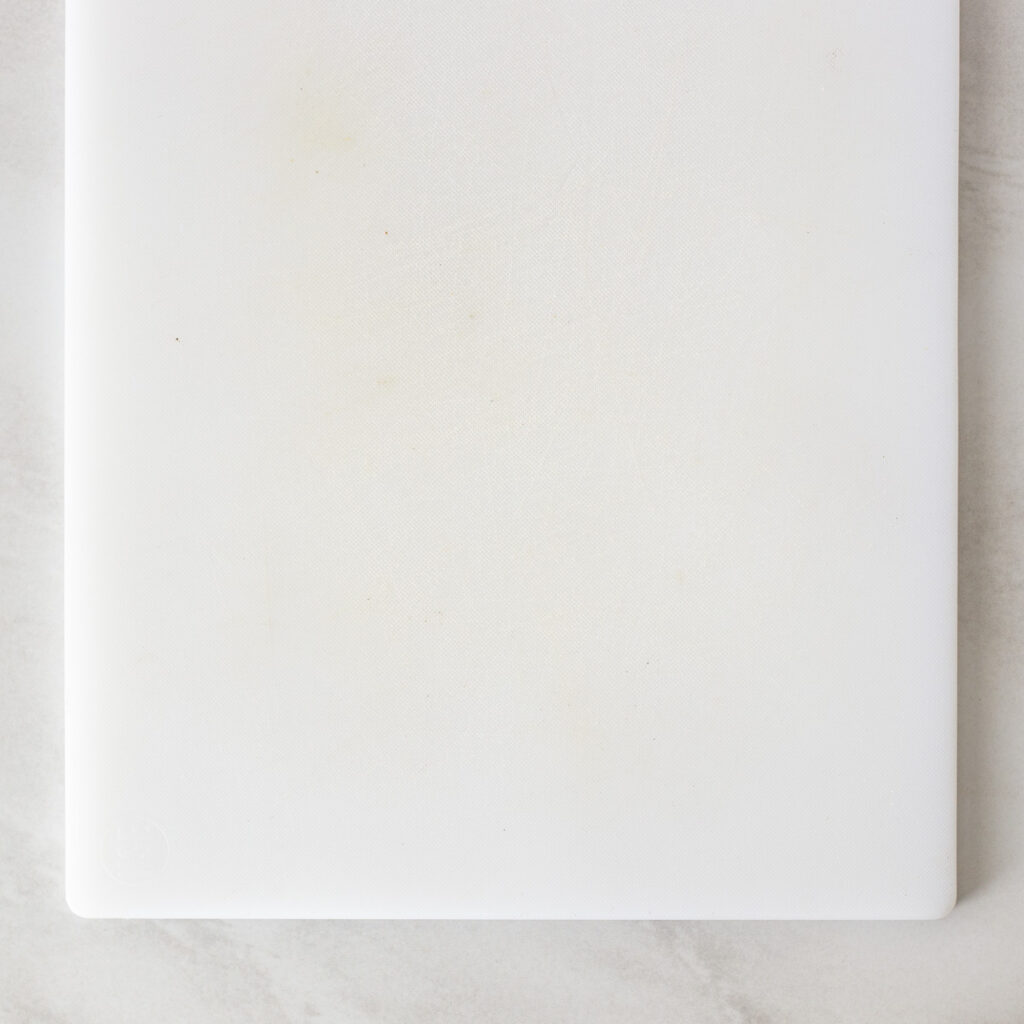
Polycarbonate & Plastic Cutting Boards
Polycarbonate and plastic cutting boards are wildly popular. They are a great, budget-friendly option in so many kitchens. And they come in various colors, sizes, and options. They are dishwasher safe and easy to clean. What’s not to love?
Pros:
- Affordable and lightweight: Plastic boards are inexpensive. They are easy to find and come with a variety of colors and sizes.
- Easy to clean: Most plastic cutting boards are nonporous and dishwasher safe, making clean up and disinfection a breeze. They will not absorb liquids or odors.
Cons:
- Scar easily: Frequent cutting on a plastic board will leave grooves in the surface. These areas can harbor bacteria if not properly cleaned.
- Can be tough on knives: Hard, plastic cutting boards can also be tough on knife blades and leave to quicker dulling, especially if it has a lot of grooves or scratches.
Glass Cutting Boards
Glass cutting boards can be stunning. They are also non-porous and easy to clean. But they are not the best choice to cut on if you are looking for knife longevity.
Pros:
- Easy to clean: Glass boards are easy to clean and sanitize, making them ideal for tasks that require high hygiene standards.
- Stain-resistant: Glass will not absorb stains, liquids, or odors.
Cons:
- Extremely hard on knives: The strong and abrasive surface of a glass cutting board will quickly dull the edge of a knife. With heavy use, it can even cause your knife to chip or break.
- Not ideal for cutting: The slipper surface makes chopping and cutting less stable and more difficult.
Rubber Cutting Boards
It seems like rubber cutting boards are taking professional kitchens by storm. They are a soft, knife-friendly option that helps strike a balance between durability and blade protection. They are often favored in professional kitchens for their comfort and durability.
Pros:
- Soft on knives: Rubber cutting boards are soft enough to preserve a knife’s edge without causing any damage.
- Non-slip surface: These soften mats often come with a non-slip surface that makes them stable for cutting and chopping.
- Easy to clean: The self-healing surface rarely gets knicks or cuts and is dishwasher safe.
Cons:
- Can retain odors: Rubber, as a softer surface, can absorb food odors over time, especially with heavy use.
- Can discolor: Rubber cutting boards can also stain and discolor over time, especially with exposure to acidic foods.
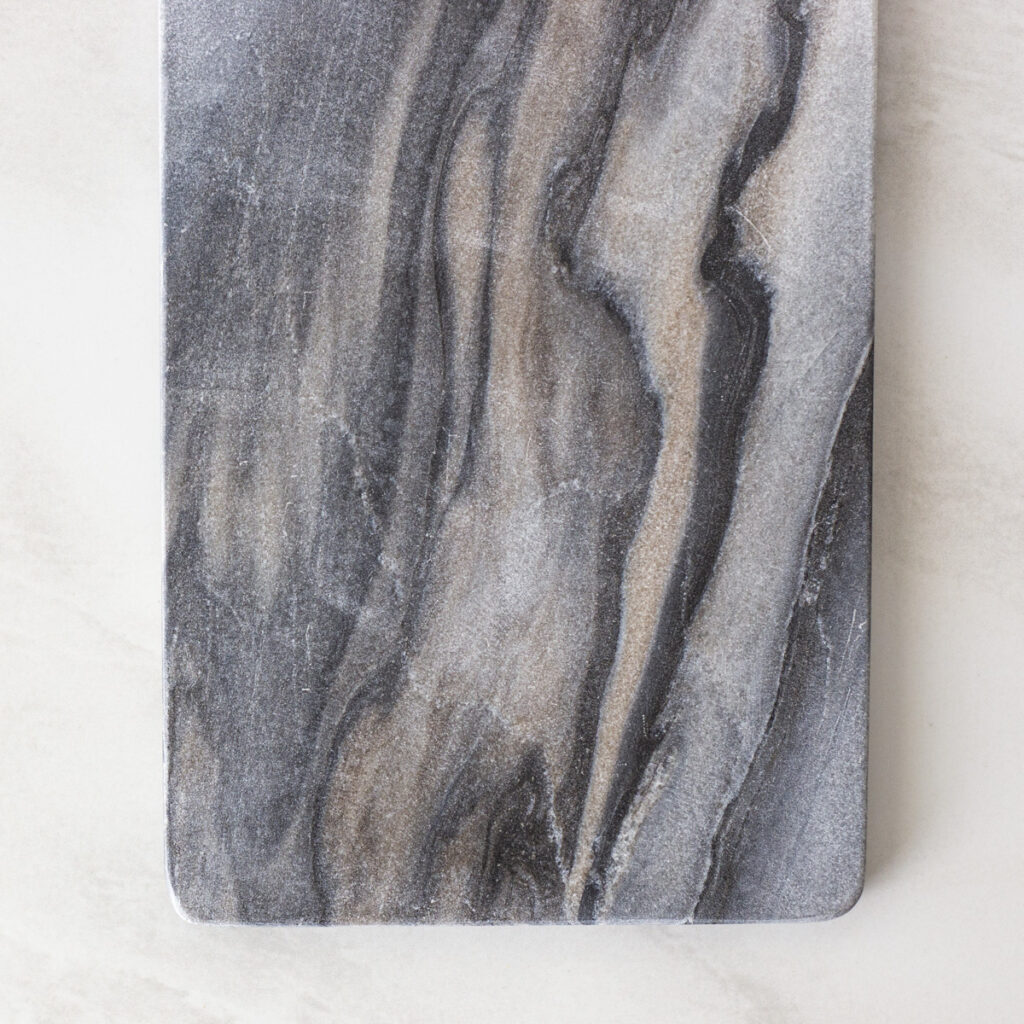
Granite or Marble Cutting Boards
There are many durable and beautiful stone cutting boards out there. But if you have ever considered using one to actually cut on, we encourage you to find something else.
Pros:
- Durable and strong: One thing is obvious, stone cutting boards are strong, steady, and durable.
- Easy to clean: Marble cutting boards are very easy to clean. It’s one of the same reasons why so many countertops are made of marble.
- Beautiful addition to the kitchen: Marble comes in a variety of unique colors and patterns. This makes them a beautiful option if you want to add aesthetic appeal to the kitchen.
Cons:
- Costs more: A good marble cutting board is costly, especially if you are looking to get one in a significant size.
- Slippery when wet: You will have to be careful, because marble is very slippery when wet, making cutting more hazardous.
- Heavy and hard to store: These stone cutting boards can also be cumbersome. They are heavy and hard to lift, and not easy to tuck out of the way when not in use.
- Dulls your knife blades: A stone cutting board can dull or break you knife, especially if you are used to cutting with a little more force.
Stainless Steel Cutting Boards
Yeah, we didn’t really know this was a thing. But it was taking social media by storm. So if you are wondering if stainless steel boards are worth your attention, you are in the right place.
Pros:
- Resists wear and tear: Stainless steel boards are durable, we will give them that. They are resistant to scratches and knife cuts and can endure a lot of wear and tear.
- Easy to clean: Again, stainless steel cutting boards are smooth and non-porous. This makes they easy to clean and sanitize. They also don’t rust, so you can run them through the dishwasher.
- Solid construction: Unlike wood and plastic, the stainless steel cannot warp or be discolored. They also will not bend or crack.
Cons:
- Dulls knives: The hard surface of a stainless steel board can dull your knives. It doesn’t absorb the force, but instead bounces it back into the knife and the blade will blunt.
- Very slippery: The surface is smooth and uniform, and can be very slippery when cutting foods like fruits or meat with a lot of liquid.
Conclusion
Choosing the right cutting board is more than just a matter of preference—it’s an investment in the longevity of your chef’s knife and all your other knives in the knife block. By selecting a board that’s gentle on your knife’s edge, you can ensure your knife stays sharp and avoid frequent and unnecessary sharpening. Whether you go for a traditional wooden board, a more modern bamboo option, or a rubber surface, be sure to choose what suits your cooking stile, maintenance preferences, and knife care needs.
All this to say, take your time and pick the right cutting board. Both your knife and your cooking experience will thank you!

